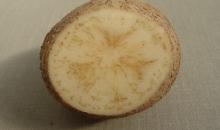'Candidatus Liberibacter solanacearum'(LIBEPS)
Photos
For publication in journals, books or magazines, permission should be obtained from the original photographers with a copy to EPPO.

Symptomatic potato tubers analyzed by specific PCR (Li et al., 2009) and positive for 'Candidatus Liberibacter solanacearum'. Haplotype E was determined.
Courtesy: Instituto Valenciano de Investigaciones Agrarias (IVIA), Spain.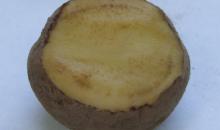
Symptomatic potato tuber analyzed by specific PCR (Li et al., 2009) and positive for 'Candidatus Liberibacter solanacearum'. Haplotype E was determined.
Courtesy: Instituto Valenciano de Investigaciones Agrarias (IVIA), Spain.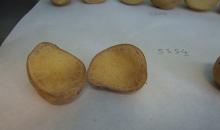
Symptomatic potato tuber analyzed by specific PCR (Li et al., 2009) and positive for 'Candidatus Liberibacter solanacearum'. Haplotype E was determined.
Courtesy: Instituto Valenciano de Investigaciones Agrarias (IVIA), Spain.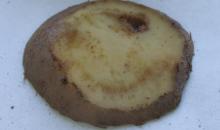
Symptomatic potato tuber analyzed by specific PCR (Li et al., 2009) and positive for 'Candidatus Liberibacter solanacearum'. Haplotype E was determined.
Courtesy: Instituto Valenciano de Investigaciones Agrarias (IVIA), Spain.
Symptomatic potato tuber analyzed by specific PCR (Li et al., 2009) and positive for 'Candidatus Liberibacter solanacearum'. Haplotype E was determined.
Courtesy: Instituto Valenciano de Investigaciones Agrarias (IVIA), Spain.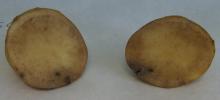
Symptomatic potato tuber analyzed by specific PCR (Li et al., 2009) and positive for 'Candidatus Liberibacter solanacearum'. Haplotype E was determined.
Courtesy: Instituto Valenciano de Investigaciones Agrarias (IVIA), Spain.
Symptomatic potato tubers analyzed by specific PCR (Li et al., 2009) and positive for 'Candidatus Liberibacter solanacearum'. Haplotype E was determined.
Courtesy: Instituto Valenciano de Investigaciones Agrarias (IVIA), Spain.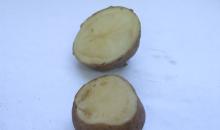
Symptomatic potato tubers analyzed by specific PCR (Li et al., 2009) and positive for 'Candidatus Liberibacter solanacearum'. Haplotype E was determined.
Courtesy: Instituto Valenciano de Investigaciones Agrarias (IVIA), Spain.
Symptomatic potato tubers analyzed by specific PCR (Li et al., 2009) and positive for 'Candidatus Liberibacter solanacearum'. Haplotype E was determined.
Courtesy: Instituto Valenciano de Investigaciones Agrarias (IVIA), Spain.
Symptomatic potato tubers analyzed by specific PCR (Li et al., 2009) and positive for 'Candidatus Liberibacter solanacearum'. Haplotype E was determined.
Courtesy: Instituto Valenciano de Investigaciones Agrarias (IVIA), Spain.
Browning of vascular tissues in cut potato tubers. Haplotype E was determined.
Courtesy: Centro Regional de Diagnóstico. Junta de Castilla y León. Salamanca, Spain
Browning of vascular tissues in cut potato tubers. Haplotype E was determined.
Courtesy: Centro Regional de Diagnóstico. Junta de Castilla y León. Salamanca, Spain
Browning of vascular tissues in cut potato tubers. Haplotype E was determined.
Courtesy: Centro Regional de Diagnóstico. Junta de Castilla y León. Salamanca, Spain
Symptoms associated with'Ca. L. solanacearum' in a celery plant
Courtesy: María M. López - Instituto Valenciano de Investigaciones Agrarias (IVIA), Spain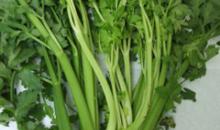
Symptoms associated with 'Ca. L. solanacearum' in a celery plant
Courtesy: María M. López - Instituto Valenciano de Investigaciones Agrarias (IVIA), Spain
Symptoms associated with'Ca. L. solanacearum' in a celery plant
Courtesy: María M. López - Instituto Valenciano de Investigaciones Agrarias (IVIA), Spain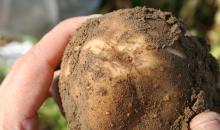
“Pink belly”, sign of severe zebra chip damage
Courtesy: Oregon State University, Irrigated Agricultural Entomology Program (Rondon)
Potato plants mortality due to zebra chip
Courtesy: Oregon State University, Irrigated Agricultural Entomology Program (Rondon)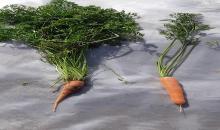
Symptoms on carrot of Ca. L. solanacearum (left) in Spain. No symptoms (right)
Courtesy: Muriel Suffert (EPPO)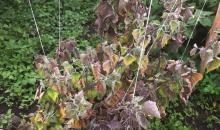
'Candidatus Liberibacter solanacearum'-infected cape gooseberry plant showing purpling leaves. Ecuador 2020
Courtesy: Jorge David Caicedo Chávez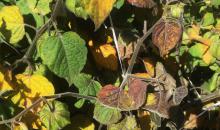
'Candidatus Liberibacter solanacearum'-infected cape gooseberry plant showing yellowing and purpling leaves. Ecuador 2020
Courtesy: Jorge David Caicedo Chávez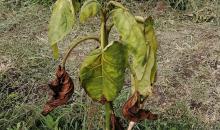
'Candidatus Liberibacter solanacearum'-infected tamarillo plant showing wilting in young plants. Ecuador 2020
Courtesy: Jorge David Caicedo Chávez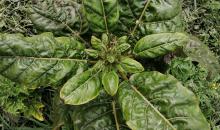
'Candidatus Liberibacter solanacearum'-infected tamarillo plant showing shoot proliferation. Ecuador 2020
Courtesy: Jorge David Caicedo Chávez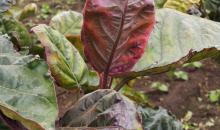
Candidatus Liberibacter solanacearum'-infected tamarillo plant showing pink coloration of new leaves. Ecuador 2020
Courtesy: Jorge David Caicedo Chávez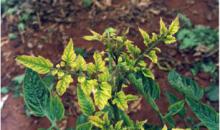
Tomato plant infected by ‘Candidatus Liberibacter solanacearum'.
Courtesy: J.E. Munyaneza, USDA-ARS, Konnowac Pass (US).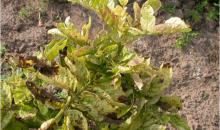
Potato plant with zebra chip and psyllid yellows symptoms.
Courtesy: J.E. Munyaneza, USDA-ARS, Konnowac Pass (US).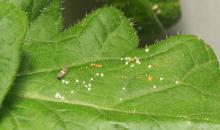
Bactericera cockerelli adults with eggs and white granule excrements.
Courtesy: J.E. Munyaneza, USDA-ARS, Konnowac Pass (US).
3-4th instar potato psyllid (Bactericera cockerelli, vector of 'Candidatus Liberibacter solanacearum').
Courtesy: J.E. Munyaneza, USDA-ARS, Konnowac Pass (US).
Carrot plants infected by ‘Candidatus Liberibacter solanacearum'.
Courtesy: J.E. Munyaneza, USDA-ARS, Konnowac Pass (US).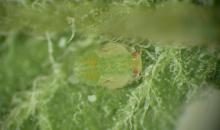
5th instar potato psyllid (Bactericera cockerelli), vector of 'Candidatus Liberibacter solanacearum'.
Courtesy: J.E. Munyaneza, USDA-ARS, Konnowac Pass (US).


